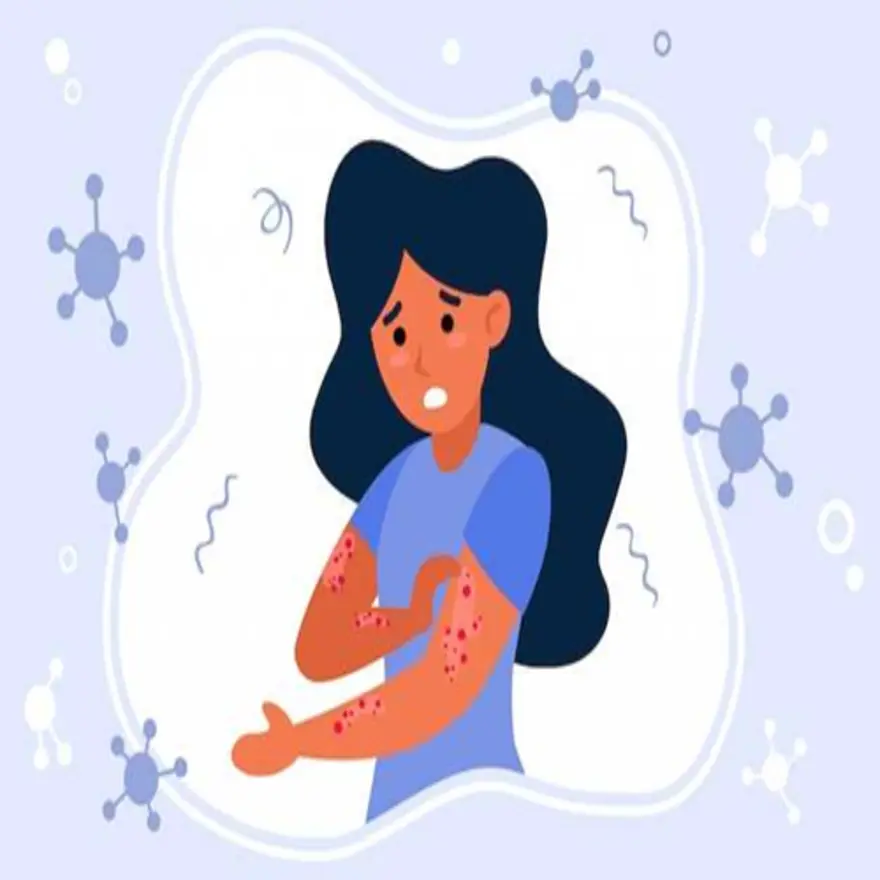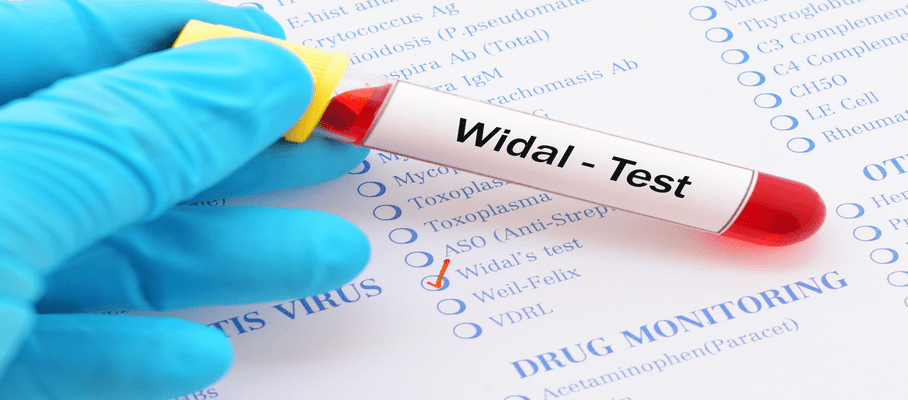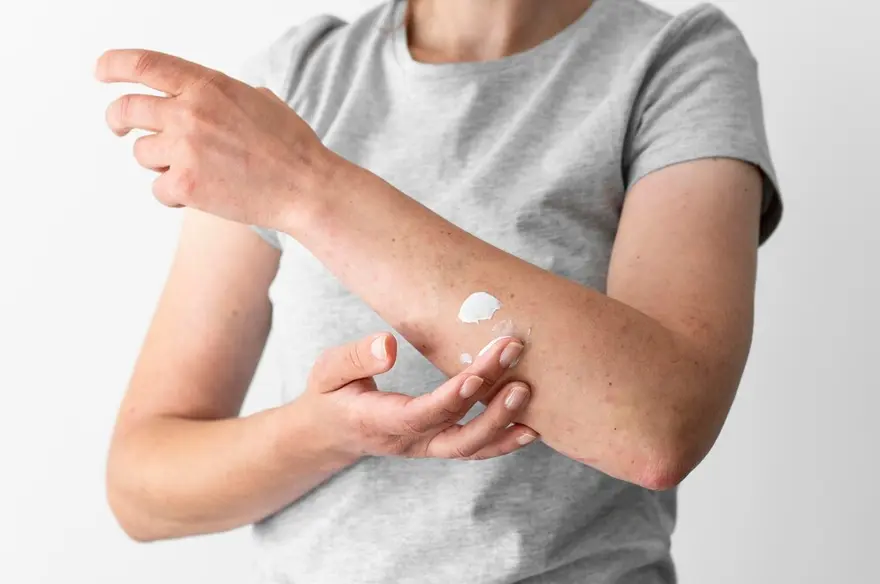Preventive Healthcare
What is Pityriasis Rosea? Symptoms, Causes, and Remedies
262 Views
0

What is Pityriasis Rosea?
Pityriasis rosea is a self-limiting, benign skin rash characterised by the appearance of a large, slightly raised, scaly patch called the herald patch, followed by the eruption of multiple smaller lesions across the torso and proximal extremities. The rash typically resolves within 6–8 weeks without scarring, although some individuals may experience residual hyperpigmentation.
Pityriasis rosea is most commonly seen in adolescents and young adults, with a peak incidence between 10 and 35 years of age. While the exact cause remains unknown, it is thought to be triggered by a viral infection, particularly certain strains of herpes viruses. Pityriasis rosea is not contagious and does not pose a serious health risk, but its symptoms can be bothersome and may require symptomatic treatment.
Causes and Risk Factors of Pityriasis Rosea
Precise pityriasis rosea causes have not been definitively established, but research suggests it may be linked to a viral infection, particularly human herpesvirus types 6 and 7 (HHV-6, HHV-7). This theory is supported by several observations, including:
- The presence of flu-like symptoms, such as mild fever, fatigue, and headache, in some individuals before the appearance of the rash
- Seasonal variation in incidence, with higher rates occurring in spring and fall
- Occasional clustering of cases, suggesting a potential infectious trigger
Despite these indications, pityriasis rosea is not considered contagious. It does not spread through direct skin contact, respiratory droplets, or shared personal items.
Certain factors may increase an individual's susceptibility to developing pityriasis rosea, including:
- A family history of the condition, suggesting a possible genetic predisposition
- A weakened immune system, which may make the body more vulnerable to viral triggers
- Psychological or physical stress, which can impact immune function and contribute to outbreaks
- Recent illness, particularly viral infections, which may act as a trigger
- The use of certain medications, including terbinafine, isotretinoin, and omeprazole, which have been associated with drug-induced cases of pityriasis rosea
Recognising these risk factors can aid in early identification and management, ensuring appropriate care and symptom relief.
Symptoms Of Pityriasis Rosea
The hallmark of pityriasis rosea is a distinctive rash that evolves through several pityriasis rosea stages:
- Herald patch: The initial lesion, known as the herald patch, is a single, oval-shaped, slightly raised, salmon-coloured patch with a fine, scaly border. It typically measures 2-10 cm in diameter and appears on the trunk, neck, or upper extremities.
- Generalised rash: Within a few days to weeks, multiple smaller, oval-shaped patches appear, primarily on the torso and proximal extremities. These secondary lesions are usually arranged in a Christmas tree pattern, following the lines of cleavage on the back.
- Resolution: The final rash gradually fades over 6–8 weeks, sometimes leaving behind temporary hyperpigmentation, especially in darker skin types.
Other pityriasis rosea symptoms that may accompany the rash include:
- Itching (pruritus), which can range from mild to severe
- Flu-like symptoms, such as fever, headache, and fatigue, in some cases
- Lymph node enlargement in the affected areas
If you suspect you have pityriasis rosea, it's essential to consult a healthcare provider for an accurate diagnosis and appropriate management.
Diagnosis of Pityriasis Rosea
Pityriasis rosea is primarily a clinical diagnosis based on the characteristic appearance and distribution of the rash. Healthcare providers consider several key factors when evaluating a potential case:
- Medical history: A thorough review of the patient's medical history, including recent illnesses, medications, and family history of skin conditions, can provide valuable context.
- Physical examination: The presence of the herald patch, followed by the appearance of the generalised rash in a Christmas tree pattern, is highly suggestive of pityriasis rosea.
- Skin biopsy: In atypical or uncertain cases, a skin biopsy may be performed to rule out other conditions, such as secondary syphilis, guttate psoriasis, or cutaneous T-cell lymphoma.
- Blood tests: Although not routinely indicated, blood tests may be considered to exclude other causes of the rash, particularly in patients with atypical features or persistent symptoms.
It's important to seek medical attention if you develop a widespread rash, as pityriasis rosea stages can resemble other skin conditions that may require specific treatment.
Treatment Options for Pityriasis Rosea
As pityriasis rosea is a self-limiting condition, treatment primarily focuses on alleviating symptoms and providing supportive care throughout the course of the illness. Most cases resolve within six to eight weeks without medical intervention. However, for individuals experiencing significant discomfort, several treatment options can help manage pityriasis rosea symptoms effectively:
- Emollients and Moisturisers: Keeping the skin well-hydrated with fragrance-free, non-comedogenic moisturisers can help soothe irritation. Oatmeal baths and calamine lotion may also provide relief from itching.
- Topical Corticosteroids: For cases with moderate to severe pruritus, a healthcare provider may prescribe a low- to medium-potency corticosteroid, such as hydrocortisone or triamcinolone, to reduce inflammation and itching.
- Oral Antihistamines: Non-sedating antihistamines, like loratadine or cetirizine, can help alleviate itching, particularly if symptoms worsen at night. Sedating antihistamines, such as diphenhydramine, may be used before bedtime for better sleep.
- Phototherapy: In persistent or widespread cases, narrow-band ultraviolet B (NB-UVB) light therapy under medical supervision may help accelerate rash resolution and relieve itching.
- Antiviral Medications: While not a standard treatment, oral antivirals like acyclovir or valacyclovir may be considered for severe or prolonged cases, given the suspected viral association of pityriasis rosea.
Consulting a dermatologist ensures appropriate management tailored to the severity and extent of the rash, helping to minimise discomfort and expedite recovery.
Home Remedies and Self-Care Tips
In addition to medical pityriasis rosea treatment, several home remedies and self-care measures can help manage symptoms and promote healing:
- Avoid irritants: Use mild, fragrance-free cleansers and moisturisers, and steer clear of harsh soaps, detergents, and skincare products that may aggravate the rash.
- Wear loose, breathable clothing: Opt for soft, lightweight fabrics like cotton to minimise friction and allow the skin to breathe.
- Apply a cool compress: Placing a cool, damp cloth on the affected areas can help soothe itching and inflammation.
- Manage stress: Engage in stress-reducing activities, such as meditation, deep breathing exercises, or yoga, to support your immune system and overall well-being.
- Protect your skin from the sun: Use a broad-spectrum sunscreen with an SPF of at least 30 and cover the affected areas with clothing when outdoors, as sunlight may exacerbate the rash in some cases.
Remember, while these self-care measures can provide relief, they should not replace medical advice. If your symptoms persist or worsen, consult a healthcare professional.
Complications and When to See a Doctor
Although pityriasis rosea is generally a mild and self-limiting condition, some individuals may experience complications. One of the most common issues is severe itching, which can disrupt daily activities and interfere with sleep. Persistent scratching may also lead to secondary bacterial infections, characterized by redness, swelling, pain, or discharge from affected areas. Additionally, once the rash resolves, some individuals may develop post-inflammatory hyperpigmentation (dark spots) or hypopigmentation (light spots), particularly in those with darker skin tones. In rare cases, the rash may recur, though this is uncommon.
Certain individuals, including those with weakened immune systems or underlying health conditions, should consult a doctor to rule out other potential causes of the rash. Additionally, pregnant individuals should seek medical advice, as pityriasis rosea in early pregnancy has been linked to a slightly increased risk of miscarriage. A healthcare professional can provide a proper diagnosis and guide appropriate management strategies.
Prevention Tips for Pityriasis Rosea
As the exact pityriasis rosea causes remain unknown, there are no guaranteed ways to prevent its occurrence. However, some general measures may help reduce the risk:
- Maintain a healthy immune system: Eat a balanced diet, exercise regularly, get adequate sleep, and manage stress to support your body's natural defenses.
- Practice good hygiene: Wash your hands frequently, avoid sharing personal items, and maintain clean living spaces to minimize the risk of viral infections.
- Be cautious with medications: If you have a history of pityriasis rosea, discuss the potential risks and benefits of medications like terbinafine, isotretinoin, and omeprazole with your healthcare provider.
- Stay informed: Familiarise yourself with the symptoms of pityriasis rosea and seek prompt medical attention if you suspect you have developed the condition.
Conclusion
Pityriasis rosea is a common, self-limiting skin condition that, while often alarming in appearance, is generally benign and resolves without long-term consequences. Remember, with proper care and patience, most cases of pityriasis rosea resolve completely within 6-8 weeks.
If you have concerns about your skin health or are experiencing a persistent rash, consider exploring the services offered by Metropolis Healthcare. As a leading chain of diagnostic laboratories across India, Metropolis Healthcare provides comprehensive pathology testing and health check-up services, including at-home sample collection by qualified technicians. With a commitment to delivering accurate results and personalised care, Metropolis Healthcare can help you take charge of your health and well-being.























 WhatsApp
WhatsApp
